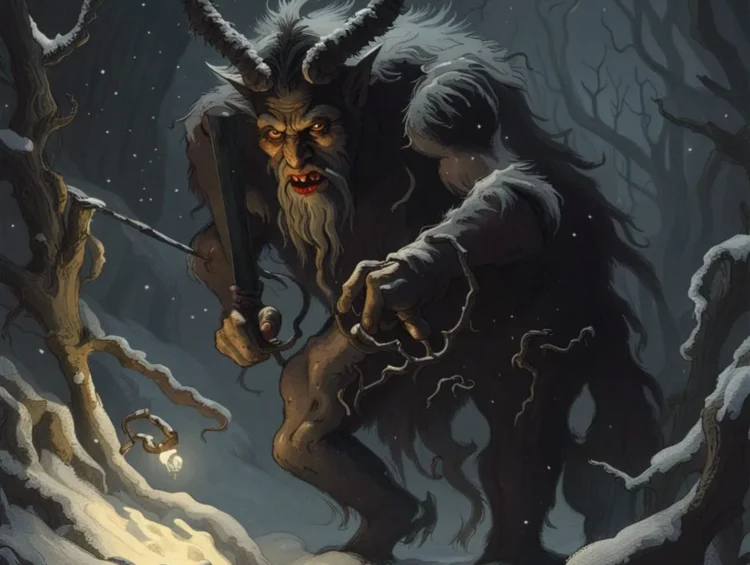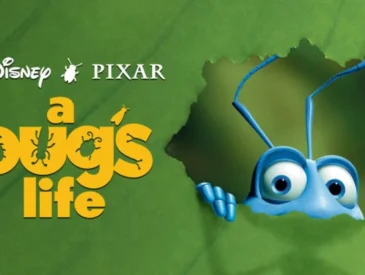Krampus, the dark counterpart to Santa Claus, has long fascinated people with his eerie presence in European folklore. While Santa rewards the good, Krampus punishes the naughty, making him a symbol of fear, retribution, and punishment. Over time, Krampus has made his way from myth into art, becoming a favorite subject for artists across various mediums. In this article, we’ll explore the evolution of Krampus art, its themes, and its cultural significance. What is Krampus? Krampus originates from Alpine folklore, where he served as a terrifying companion to Saint Nicholas. While Saint Nicholas rewarded well-behaved children with gifts, Krampus punished the naughty. Often depicted with horns, a long tongue, chains, and birch branches, Krampus became a figure of fear and an icon of balance between good and evil during the holiday season.
Rise of Krampus in Modern Pop Culture In recent years, Krampus has seen a resurgence in popularity, especially around the holiday season. Beyond his presence in local festivals, Krampus has appeared in movies, TV shows, and more importantly, as a powerful subject in modern art. Artists across the globe have been drawn to his dark, mischievous nature, creating a wide variety of Krampus-inspired works that both celebrate and reimagine his terrifying role.
The Origins of Krampus Art
Krampus in Traditional Art Krampus first appeared in visual form through early European postcards, known as “Krampuskarten.” These often humorous and frightening illustrations showed Krampus chasing or punishing children. Many of these early depictions were influenced by religious symbolism and carried dark, cautionary messages about the consequences of misbehavior.
Transition to Contemporary Art Over time, Krampus moved from traditional prints to contemporary art. Today, artists interpret Krampus through the lenses of fantasy, horror, and surrealism. Modern Krampus art often blurs the line between folklore and personal expression, allowing for diverse styles and themes to emerge.
Popular Themes in Krampus Art
Darkness and Mythology A recurring theme in Krampus’s art is the contrast between darkness and light. Krampus is often portrayed menacingly, emphasizing his role as the punisher. Artists use shadows, sharp lines, and ominous settings to highlight his fearsome presence. His depiction serves as a reminder of the consequences of bad behavior, especially during a time associated with cheer and goodwill.
Symbols of Fear and Punishment Krampus is easily recognized by his horns, chains, and birch branches—symbols tied to punishment. Artists often focus on these elements, emphasizing the terror associated with Krampus. Scenes of Krampus carrying misbehaving children in his sack are a common subject, reflecting the folklore that he would drag bad children to the underworld.
Cultural Variations Krampus’s art varies depending on cultural influences. For example, in Austrian and German art, Krampus is often depicted more traditionally, whereas American depictions might lean into horror or gothic aesthetics. These regional interpretations provide unique twists on Krampus while keeping the core elements of fear intact.
Mediums Used in Krampus Art
Traditional Mediums Historically, Krampus was depicted in woodblock prints and ink illustrations, which emphasized his folkloric roots. These early images often used limited color palettes, relying on sharp contrasts between light and dark to create a sense of unease.
Digital Art As technology evolved, so did Krampus’s art. Digital tools allow artists to create high-definition, stylized images that bring Krampus to life in vibrant color and detail. Digital Krampus’s art often merges traditional motifs with modern design, adding a fresh layer of complexity to his character.
Sculpture and 3D Art Krampus also appears in 3D art and sculpture. These physical representations of Krampus are popular during Krampusnacht festivals, where people dress in elaborate Krampus costumes. Sculptures and figurines provide a tactile way for artists and collectors to engage with the legend of Krampus.
Street Art and Graffiti In urban settings, Krampus has been reimagined through street art. Graffiti artists often portray him as a rebellious, anti-hero figure, using murals and public spaces to give Krampus a contemporary twist. This helps keep the legend alive in modern, everyday environments.
Popular Artists in the Krampus Art Scene
Notable Artists Known for Krampus Depictions Several established artists have gained recognition for their Krampus-themed works. They draw from both historical sources and modern sensibilities, blending horror and fantasy to create unforgettable Krampus imagery. Artists like Monte Beauchamp, who curated collections of vintage Krampus postcards, have played a key role in popularizing Krampus art.
Emerging Artists to Watch Newer artists are also joining the Krampus art movement, offering fresh perspectives on the traditional figure. These creators experiment with bold colors, dynamic compositions, and imaginative interpretations, ensuring Krampus remains a relevant and evolving subject.
The Role of Krampus Art in Festivals and Celebrations
Krampusnacht and Festivals Krampusnacht, celebrated in early December, is one of the most well-known festivals dedicated to Krampus. During these events, people dress up in elaborate Krampus costumes and parade through the streets. Krampus art plays a key role here, from posters and banners to masks and statues, contributing to the festive yet eerie atmosphere.
Merchandising and Commercial Art Krampus-themed merchandise has become a popular holiday trend. From greeting cards to holiday decorations, Krampus art has entered the mainstream, offering an alternative to the usual Christmas fare. Commercial Krampus art often has a playful twist, making the figure more accessible while still maintaining its dark origins.
Exhibitions and Art Shows Krampus-inspired art exhibitions have also become a popular way for artists to showcase their work. These shows often feature diverse representations of Krampus, highlighting the creativity and range of artists who find inspiration in his story.
Creating Your Own Krampus Art
Inspiration and Research For those interested in creating their own Krampus art, inspiration can be found in traditional folklore, historical postcards, or modern reinterpretations. Researching different cultural depictions of Krampus can also provide unique ideas for how to approach his character.
Techniques and Tools Depending on the medium, different techniques can be used to bring Krampus to life. Traditional methods like sketching or painting are always popular, but many artists now use digital platforms for greater flexibility and precision.
Sharing Krampus Art There are several platforms where Krampus art enthusiasts can share their work. Social media sites like Instagram and art communities like DeviantArt allow artists to showcase their creations to a broader audience. Participating in themed art challenges around the holidays is also a great way to get involved.
Conclusion
The Future of Krampus Art As the legend of Krampus continues to spread globally, so too does the art inspired by him. With new technologies and artistic movements, Krampus will likely remain a popular subject in various forms of art, from traditional to avant-garde.
Final Thoughts Krampus art offers a unique blend of folklore, fear, and creativity. Whether it’s through traditional postcards or modern digital designs, artists continue to find innovative ways to interpret this dark figure, keeping the story of Krampus alive for future generations. This article explores the intricate world of Krampus art, showcasing its deep roots in folklore and its exciting evolution in contemporary artistic spaces. Whether you’re a fan of horror, fantasy, or cultural traditions, Krampus art offers a fascinating subject for artists and audiences alike.




